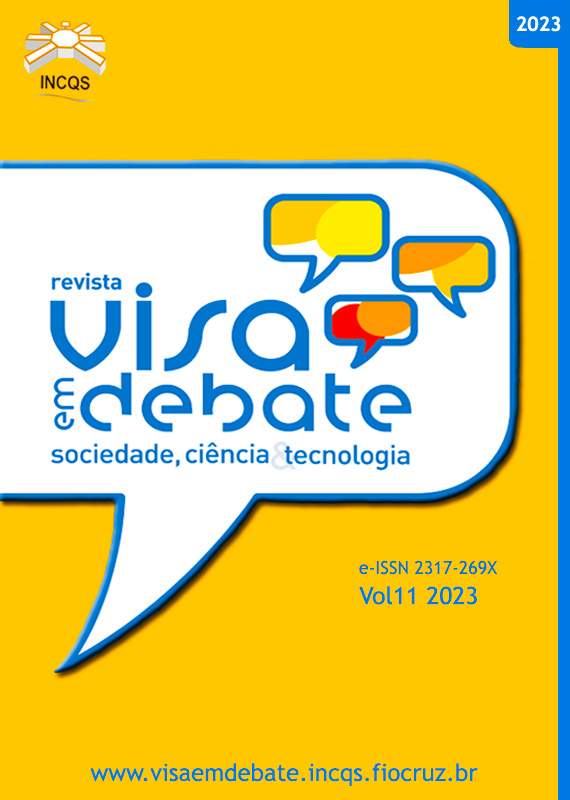The mapping of processes in the quality management of a hospital lactation center
Vigil Sanit Debate, Rio de Janeiro, 2023, v.11: e02146 | Published on: 26/10/2023
DOI:
https://doi.org/10.22239/2317-269x.02146Keywords:
Infant Formulas, Lactation Center, Quality Management, Process MappingAbstract
Introduction: Infant formulas can be an adjuvant or therapeutic measure for the recovery of hospitalized children when breastfeeding is impossible or contraindicated. Thus, the activities in the lactation room should be performed under strict aseptic techniques, aiming to provide the child with food with less risk of contamination. Knowledge and control of the processes involved in the preparation of infant formulas are essential
for effective monitoring of the quality of the product produced and indispensable for improving the quality management of a hospital lactation center. Tools can support the quality management, being the mapping of the processes one of them. To collect information from the processes to be mapped, the SIPOC Matrix, used worldwide, appears as an alternative, as it allows the visualization of all the interrelationships within a process. Objective: To map processes identified in the manipulation of infant formulas packed in baby bottles and propose opportunities for improvement to the lactation center of a National Institute of Health. Method: To identify the processes involved in the manipulation of infant formulas, observation was performed for 2 days. For the mapping of the processes, the SIPOC Matrix was produced; then, processes were designed using the Bizagi® software. Results: 27 processes were identified in the handling of infant formulas. With the mapping, 04 opportunities for improvement were perceived: contingency plan for lack of water; contingency plan for cooling; use of sterile bottles and development of meeting schedule with multiprofessional teams. Conclusions: Certainly, the mapping of processes using the Bizagi® tool was a challenge faced in this work, because it is new in the field of Nutrition. The main contribution of this study was to show that the mapping enabled the detailed observation of the processes involved in the handling of infant formulas, allowing for the identification of opportunities for improvement, highlighting that this methodology can be perfectly used in other care and production services.
Downloads
Downloads
Published
Issue
Section
License
Copyright (c) 2023 Simone de Pinho Ferreira Azevedo, Mirian Martins Gomes , Silvia Regina Magalhães Couto Garcia (Autor)

This work is licensed under a Creative Commons Attribution 4.0 International License.
COPYRIGHT ALLOWANCE The author (s) hereinafter designated as the ASSIGNOR hereby assign and transfer, free of charge, the ownership of the copyrights related to this ARTICLE to the Vigilância Sanitária em Debate: Sociedade, Ciência & Tecnologia (Health Surveillance under Debate: Society, Science & Technology) – Visa em Debate, represented by FUNDAÇÃO OSWALDO CRUZ, established at Av. Brasil, nº 4365, Manguinhos, Rio de Janeiro, RJ, Brazil, CEP 21045-900, under the conditions set out below: (a) The terms and conditions set forth in this Agreement shall apply to the following: 1. The ASSIGNOR declares that they s(he) is (are) the author (s) and owner (s) of the copyrighted property of the ARTICLE submitted. 2. The ASSIGNOR declares that the ARTICLE does not infringe the copyrights and / or other property rights of third parties, that the disclosure of images (if any) has been authorized and that they s(he) assume(s) full moral and / or property liability for its content, before third parties. 3. THE ASSIGNOR assigns and transfers all copyrights relating to the ARTICLE to the ASSIGNEE, especially the rights of editing, publication, translation into another language and reproduction by any process or technique. The ASSIGNEE becomes the exclusive owner of the rights related to the ARTICLE, and any reproduction, totally or partially, is prohibited in any other means of publicity, printed or electronic, without prior written authorization from the ASSIGNEE. 4. The assignment is free and, therefore, there will be no remuneration for the use of the ARTICLE by the ASSIGNEE.







